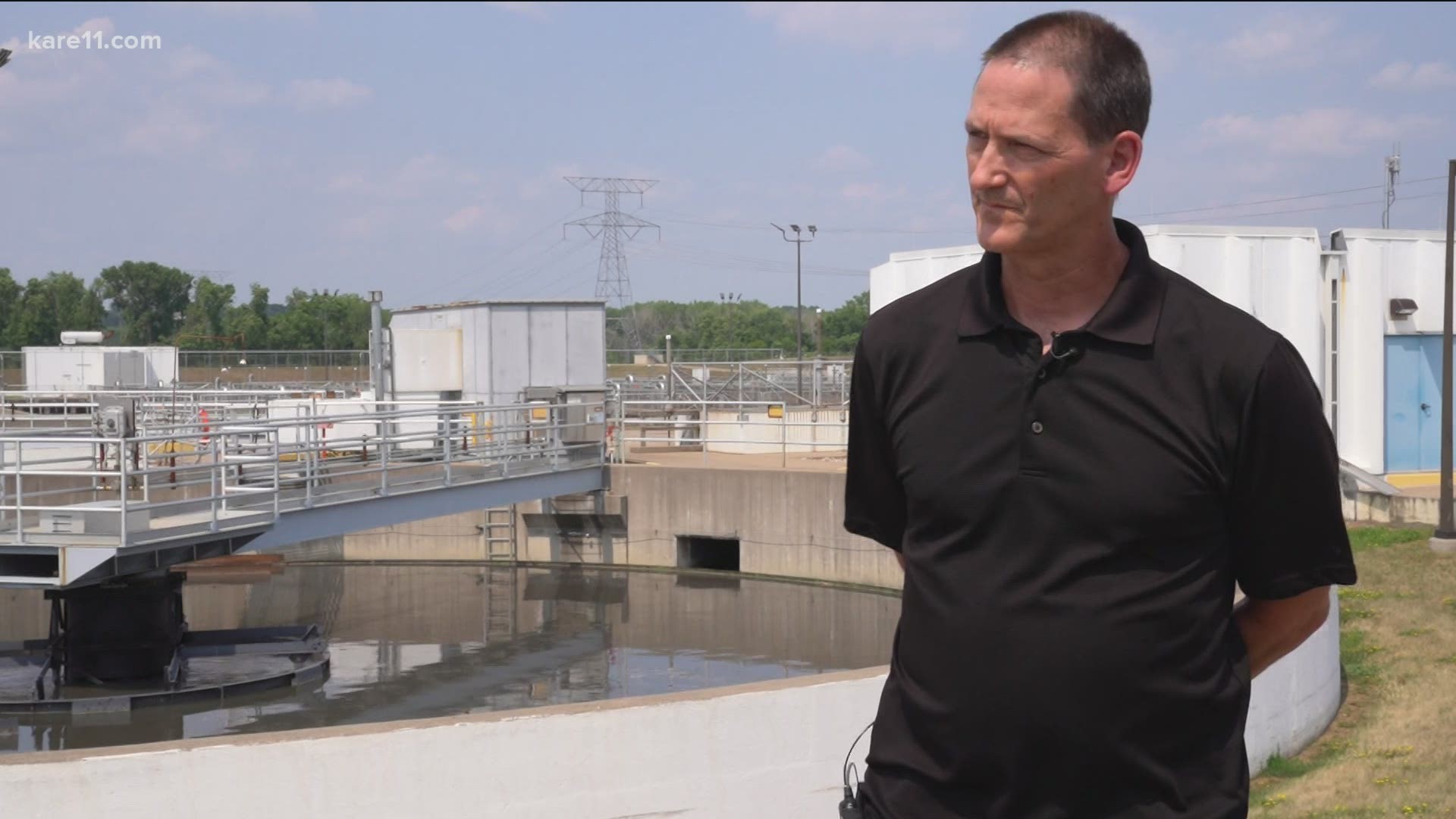SHAKOPEE, Minn. — Here's something you've probably never thought about - millions of people in the Twin Cities are connected everyday when they flush a toilet or run a washing machine.
The wastewater is cleaned at nine treatment plants and KARE 11 got an inside look at the award-winning service that protects you and the environment.
One plant is the Blue Lake Wastewater Treatment Facility in Shakopee. Plant Manager Dave Simons says it treats 26 million gallons of dirty water every day that comes from about 300,000 people in 34 nearby cities, including Hopkins, Savage and Chaska.
"Any place there's a drain and water can go somewhere down the drain, it comes here," said Simons.
The Metropolitan Council Environmental Services runs all the plants across the seven-county metro area. It does such an efficient job cleaning the water, MCES has won national performance awards multiple years in a row.
"To know that all of our plants are now working perfectly is a great accomplishment," said Council member Wendy Wulff. "Very few places can say that."
The process at the plant starts by weeding out the big stuff, like rags and flushable wipes, through screens. Then, it removes the grit that includes sand, eggshells and gravel from the water.
Next, it's put through a primary settling where other solids settle to the bottom of big wells where the water is about halfway clean at that point.
"The bad news is the half that's still there is really finely dissolved things that are really difficult to remove," said Simons.
It's treated again in tanks full of bacteria - 240 tons of micro-organisms, in fact, that help to remove leftover organic waste.
"They're our worker bees," said Simons. "They're eating the waste out of the water for us."
Soon after a final settling, the water is disinfected until it's safe to finally flow out to the Minnesota River from the Blue Lake Plant. Other plants outflow to the Mississippi River.
"We protect public health, we protect and improve the environment and we try to do it in a way that's efficient and cost efficient so we support the economic health of our region," said Simons.
All the plants connect about 110 cities in all with about 600 miles of pipes. At Blue Lake, it takes two days to move a drop of water through the plant that was built back in 1971.
The whole project is so cost-effective that your water rates are about 40% below the nationwide average.
"For me, it's the most fun I've ever had in government because we can run it like a business, look long term, work within the rules, but nobody is making a partisan thing about it," said Wulff.
Simons loves to give tours at the plant and says the strangest things he's ever found in the wastewater includes kid's toys, snakes and goldfish.
The plant is planning to expand and allow for more water flow. It has a 30-year facility plan to prepare for more homes, schools and manufacturing that comes with a $400 million price tag.

